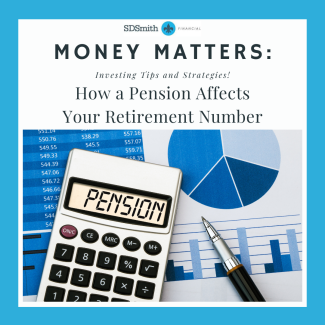
How a Pension Affects Your Retirement Number
For many years, pensions were the go-to retirement plan for businesses and workers in the U.S. However, the 401(k) model has largely taken the lead. While pensions still exist—particularly for teachers, military personnel, and employees of traditional companies—most retirement guidance revolves around the 401(k) system. So, how does having a pension impact your retirement savings compared to a plan without one?
Understanding Pensions
Pensions can vary widely based on your work history. Some individuals enjoy a pension that makes them "pension rich," providing a steady income for life, even if their savings aren’t in the millions. Others may have only a small pension from a brief job or from VA disability benefits.
The basic retirement number is often determined through a gap analysis combined with the 4% rule, which is detailed in my Retirement eBook available for download. It's essential to remember that while these formulas provide a helpful framework, they are not one-size-fits-all solutions.
Conducting a Gap Analysis
A gap analysis focuses on two main variables: expenses and income. Think of it as a reverse budget. When creating a budget for debt repayment or savings, we start with our income and subtract expenses to find our savings potential. In retirement planning, we need to estimate future expenses. A common rule of thumb is to expect around 85% of your current income. Simply multiply your salary by 0.85 to find this estimate. As you close in on retirement, it is best to do a more in-depth analysis of your expenses.
When calculating retirement income, consider Social Security, which typically replaces about 25% to 35% of your current salary. Once you have a baseline for expenses and Social Security (if applicable), it's time to factor in your pension.
Closing the Gap
With these figures in hand, we can identify the gap in retirement income. Ideally, this gap could be zero or even negative, allowing your savings and investments to serve as a wealth-building tool rather than merely covering expenses. This scenario often encourages a more aggressive investment strategy and could involve advanced techniques like Roth conversions to minimize Required Minimum Distributions (RMDs).
Let’s look at a couple of examples:
Steve and Jill
Steve and Jill require $100,000 in retirement income. They anticipate a pension of $28,000 and Social Security benefits of around $60,000, totaling $88,000 in income. This leaves a gap of $12,000. Using the 4% rule, they would need a retirement portfolio of $300,000, allowing them to withdraw 4% annually while maintaining growth. Without the pension, their gap would increase to $40,000, raising their required retirement savings to $1,000,000.
Tom and Amy
Tom and Amy aim for $75,000 in retirement income. With Social Security of $44,400 and Amy's pension of $8,000, they have a total of $52,400, leaving a gap of $22,600. This results in a retirement target of $565,000. Without Amy's pension, their gap would rise to $30,600, pushing their target to $765,000—a $200,000 difference.
While pensions can significantly enhance your retirement strategy, various factors can influence your overall plan:
- Is the pension cost-of-living adjusted?
- Is the pension taxable?
- How does the pension affect Social Security taxation?
- Are your retirement savings in Roth or Traditional accounts?
- Will any major expenses, such as a mortgage, drop off in retirement?
- Is the pension fund financially stable?
These considerations are crucial for a well-rounded retirement plan. The key takeaway? Having a solid plan in place and understanding its components is essential.
If you’re interested in setting up a personalized retirement strategy, feel free to use the calendar link below to schedule a phone call with me.

